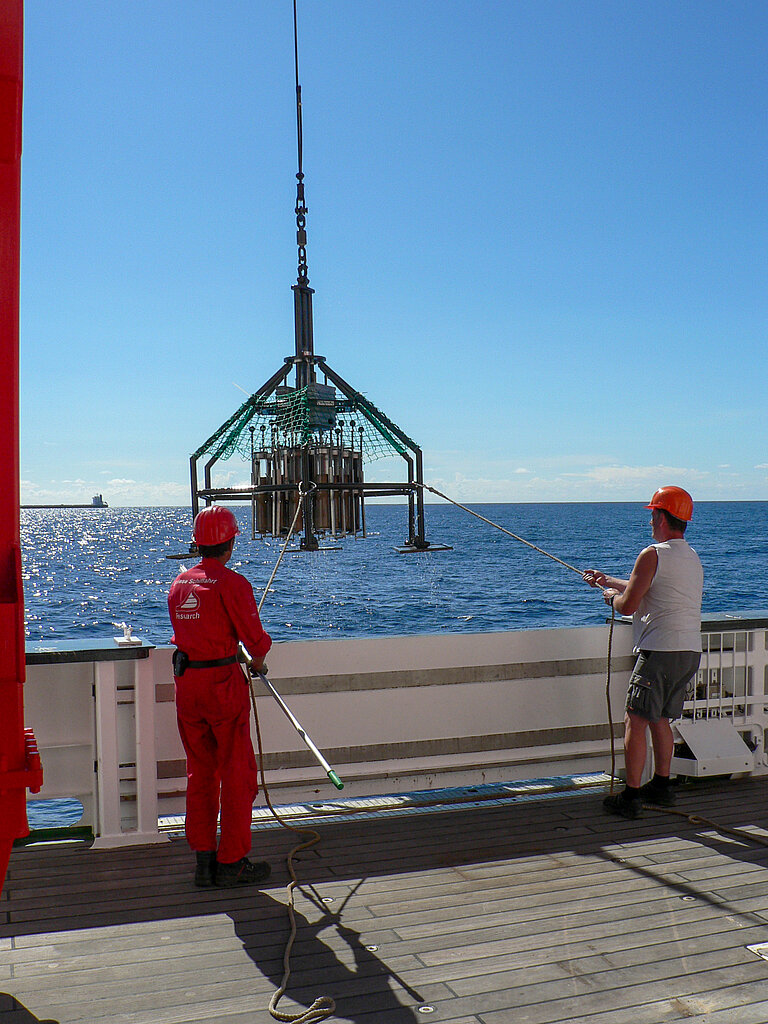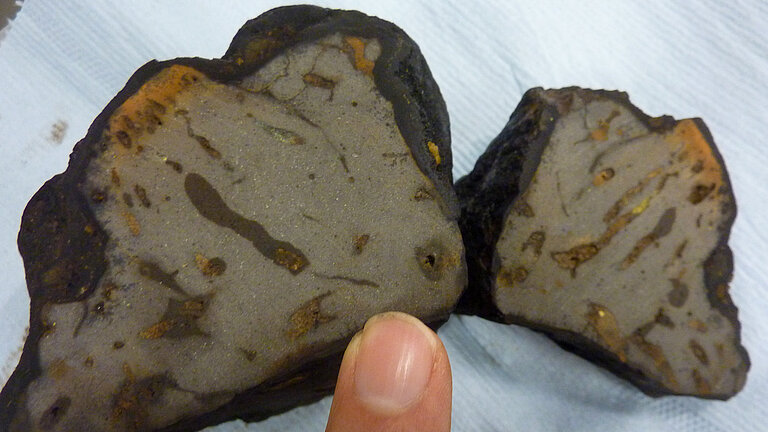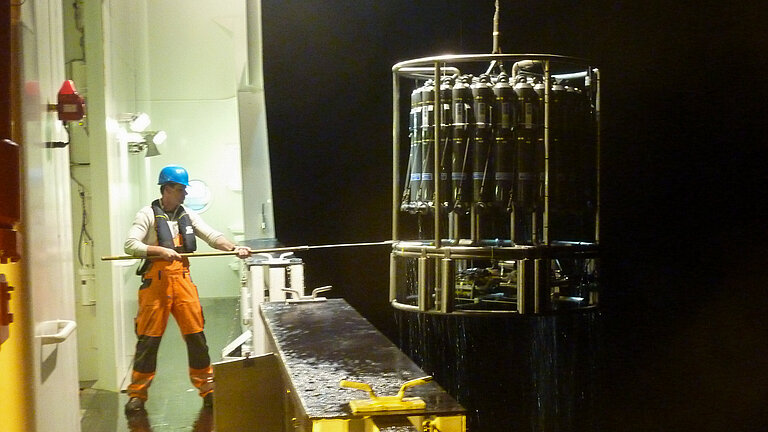In Search of the Origin of an Underwater Plateau
Expedition SO307 Investigates the Geology and Biology of the Madagascar Ridge
The ocean floor is anything but flat – beneath the sea surface lie fascinating landscapes with high mountains, deep trenches, and entire underwater mountain ranges. There are also plateaus – vast, relatively flat areas that rise significantly above the seafloor. A striking example of such an oceanic plateau lies between Madagascar and Antarctica: the Madagascar Ridge. Today, a team of 25 research scientists board the SONNE to solve a geological mystery: during the expedition SO307 MADAGASCAR/INDICOM, the team will investigate questions such as when and how the Madagascar Ridge was formed.
The Formation of the Madagascar Ridge: Three Hypotheses
For a long time, the theory was that the ridge is of volcanic origin. A so-called hotspot (mantle plume) could have pushed hot rock from the Earth's interior to the surface, where it emerged as molten rock and solidified into basalt. There are two other theories: the ridge, like the island of Madagascar itself, could be a remnant of the ancient supercontinent of Gondwana, in which case it would consist of highly stretched continental crust. Another, more recent theory is that the ridge was formed by the upwelling of mantle rock that had become became less dense due to earlier massive melting events.
To test these theories, the research team will collect rock samples directly from the Madagascar Ridge and the adjacent Mid-Ocean Ridge during the expedition. These samples will provide clues to the composition, age, and chemical properties of the ridge. “If we find basalt, this would indicate a volcanic origin,” says chief scientist Dr Jörg Geldmacher, marine geologist at GEOMAR Helmholtz Centre for Ocean Research Kiel. “If we find mantle rock, it would support the theory of mantle upwelling. Both would be exciting”.
The questions of how old the plateau is and how it was formed are of fundamental importance to the geosciences, he emphasises: “There are many such large-scale plateaus on the ocean floor, and most of them have already been shown to be of volcanic origin. There is also a clear link between large-scale volcanism and global extinction events, but we still do not know why marine volcanism has such a deadly effect”. There are several theories. For example, these events could have led to oxygen depletion in the seawater, or they could have released gas hydrates, leading to extreme climate changes.
Deep-sea Biodiversity and Biogeochemical Cycles
In addition to geological research, the expedition will also investigate the biology of the seabed. Led by Professor Dr Carsten Lüter from the Museum für Naturkunde Berlin, the MADAGASCAR-BIO project will focus on the study of biodiversity of the seabed. The aim is to identify previously unknown species and study their distribution. These studies will contribute to long-term monitoring of deep-sea biodiversity and provide important insights into how oceanic highs, such as the Madagascar Ridge, influence species distribution.
Another goal of the expedition is to better understand the cycling of organic matter in the deep ocean water column. The INDICOM project, based in the Marine Biogeochemistry Research Division at GEOMAR led by Professor Dr Anja Engel, is investigating so-called gel particles, which are rich in carbohydrates and proteins and could play an important role in microbial carbon degradation. For this purpose, water samples are collected from different depths of the Indian Ocean using a rosette water sampler to determine biogeochemical and biological parameters such as bacterial activity. This research is crucial for understanding carbon fluxes in the ocean and can help improve climate models.
Expedition at a glance:
Name: SONNE Expedition SO307 MADAGASCAR/INDICOM
Chief Scientist: PD Dr Jörg Geldmacher
Duration: 12 September 2024 - 28 October 2024
Start and Arrival: Durban (South Africa)
Research Area: Southwest Indian Ocean
Funding:
The expedition is part of three research projects funded by the German Federal Ministry of Education and Research (BMBF).

Multicorer on board the SONNE: During the SO307 expedition, this research instrument will also be used to take short sediment cores to study animal species living in and on the sediment. Photo: Oliver Meyer, GEOMAR

25 scientists set off today on the SONNE to the southwest Indian Ocean to solve a geoscientific mystery: During the expedition SO307, the scientists will try to find out when and how the Madagascar Ridge was formed. Photo: Peter Linke, GEOMAR

Section of basaltic volcanic rock: The elongated gas vesicles formed when gases from the magma escaped into the still liquid lava are clearly visible. The rock sample is covered by a thin crust of black manganese a few millimetres thick. Photo: Jörg Geldmacher, GEOMAR

Night-time operation of the CTD rosette water sampler on the research vessel SONNE: The grey bottles collect water samples from different depths, while sensors in the lower part of the probe measure various oceanographic parameters such as temperature, conductivity and depth. Photo: Jörg Geldmacher, GEOMAR


